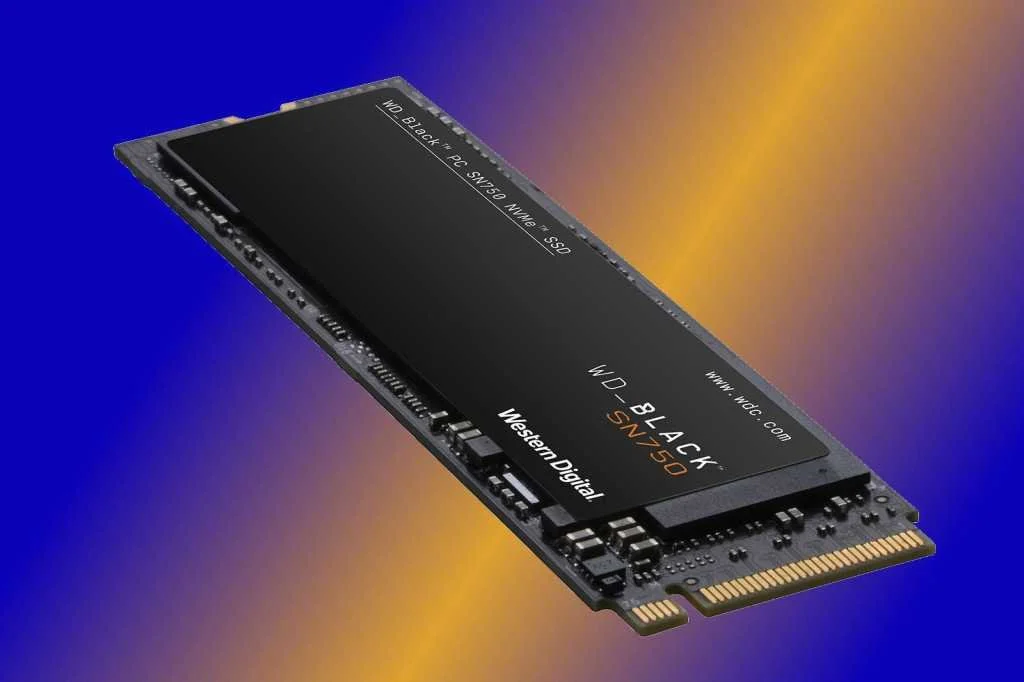Thinking About Your Digital File Storage
/Image of an NVME drive, this one is from western digital
Depending on your style and level of photographic engagement, you will create and store a number of images over time. You photograph what you like, as you like it, but where do you keep your images?
I don’t mean what software do you use, that’s your decision and so long as your system works for you, nothing else matters. What I am talking about is the physical media you keep your images on.
Memory Cards
I think that most of us understand that memory cards are convenient methods for short term storage until we can download the images to something more reliable. There is a wide variance in cost, performance and quality in memory cards, most of it buried under tons of marketing BS. The key point is not to depend on memory cards as long term storage. For every person who tells me that they have images on cards over ten years old where everything is great, I have heard complaints an order of magnitude greater how images that were fine on memory cards, became corrupted over time, or disappeared completely. The recommended consensus is that memory cards are for temporary storage.
Spinning Hard Disks
For decades, we got the most storage space for the least cost with spinning hard drives. For the same money that we paid three years ago, we can find a spinning drive with equivalent performance and 3x the amount of storage space. Not a bad thing because the mean time before failure for general use spinning drives is just over three years, so if we are using spinning drives for storage, we should be replacing them every three to four years to avoid nasty surprises. Put it your calendar when you buy a spinning drive to replace it 36 months from that day.
Solid State Drives
A solid state drive (SSD) is finally coming into a price / gb level of fair pricing. You can get an external 1TB SSD of excellent quality such as those from Samsung, for about $100. Certainly more money than a spinning drive, but with mean time before failure numbers estimated at over twelve years, they actually do pay off. The real challenge is if we want a single unit with more than 4TB of capacity, because thar’s where the price curve inflects upward suddenly. The devices are typically connected via USB C or USB 3.1 for maximum throughput, however current laptops and desktops using solid state storage built in. That storage tends to be very expensive and it is nor recommended to keep your photos on your computer internal drive. It is not a best practice, so external makes sense.
NVME Drives
NVME uses the same solid state storage model as SSD drives but in a very small form factor about the same size as a computer memory chip. They are available in various storage quantities and now cost about the same as an external SSD, although you will usually have to buy a case and cable separately. Assembly takes about a minute and then it works like any other drive on your operating system. Lower power consumption and less space demands make sense here. You can also get multi-bay NVME housings. I have one from OWC that can hold 4 individual NVME chips and it gives me a total of 16TB of locally connected storage. As I am a Mac user, I chose Thunderbolt 3 for the connection because of its greater throughput and efficiency over USB C, but if your computer does not support Thunderbolt, USB C can work just fine. NVME is the current state of the art in commercially available storage.
Connectivity
Somehow you have to get this storage connected to your computer and as mentioned, the optimal options are Thunderbolt 4/3, USB C or USB 3.1 depending on what your computer supports. Industry data shows us that other than for high end gaming, laptops rule the roost in terms of purchase volumes and the challenge then becomes the number of available ports on the laptop. I find that there are never enough built in.
For example on both my Mac and Windows laptops, one Thunderbolt port gets sucked up by the power adapter. On most machines that will leave as few as one more port, up to three more ports, if you are lucky.
Since my mobile world involves a laptop with an external NVME drive as my primary image storage and a second NVME drive as my automatically synced backup image storage, plus a third SSD or NVME as my laptop image backup, I’m out of ports very quickly.
Fortunately there are some very good external docks, that connect to your laptop that your power supply plugs into to provide power to the laptop and charge the battery but also adds a number of USB C, USB 3.0, HDMI, DisplayPort and even Ethernet ports. A Thunderbolt dock, such as those from OWC or Dell is more expensive than a USB C dock, but if your computer supports Thunderbolt, you are best served spending the extras in favour or performance, throughput and scalability. Unfortunately not all USB ports are equal. Some can only charge simple items like phones, some only do USB 2, some do USB 3, some do USB C and there is limited to zero documentation on the wattage capability of the ports themselves. I encounter lots of concerns from clients that their external drives randomly disappeat, or they get weird error messages. These are usually related to underpowered USB ports. Register a complaint and the first reply is plug the whatever device directly into the computer. Valid but useless because the computer does not have enough available ports for people like us. Computers are designed for the lowest common denominator, not the power user or the photographer or videographer.
When looking at an external dock, if it does not come with its own dedicated power supply, it is NOT a dock. It’s a hub. There are powered hubs, and I prefer them generally because there will be a steady supply of power to all the ports. Some buyers don’t want to have to plug anything in. Ok, but understand that this creates a potentional reliability problem. Powered extend the number of ports whereas docks will have their own port chipsets. If you are a committed creative and work with a laptop and need more ports, buy a dock not a hub. On the Windows side, I have used docks from both Dell and Lenovo with their makers machines with great success. On the Mac side, I choose OWC because their products have never let me down. I cannot say the same thing for any of the others that I have tried.
What About Backup
I advocate real time file by file backup of your photo and video libraries from one dedicated disk (primary) to a second dedicated disk and to keep that independent from the system backup. If you have a Mac, Time Machine works a charm to keep a fully functional and easy to use system backup. On Windows, I use whatever the product is called this week from Acronis. It does for Windows what Time Machine does for macOS.
But as we say in security, two is one and one is none, so always have a third backup that is offside. This used to be a pain in the butt, but now cloud backup is so easy and so inexpensive, one would be silly not to have it running all the time. I have a number of clients using BackBlaze although for myself, I personally choose Crashplan because it is more cost effective when you have multiple computers. The most critical thing about any backup is that you do test restores. If you don’t test restore, you have no proven backup. I have done restores from Time Machine, from Crashplan and from Acronis for Windows almost always with intent but on a couple of occasions as a requirement to a mistake or a spinning drive that went bad. I have never had an SSD or NVME go bad. I have lots of spinning drives crap out over the time that I have used them, and can say the same thing for memory cards.
Wrapping Up
Storing our work is critical. Being able to open it, recover it and restore from backup are not optional considerations. If your work matters to you, you follow a robust storage model.
Please become a member on Patreon to help support this channel. A big thanks to all the existing Patreon members! Send in comments or questions, I read and respond to all. If you shop with B&H Photo Video, please use the link on the main page as it pays me a small commission and does not cost you anything to do so. Thanks again and we will see each other again soon.









